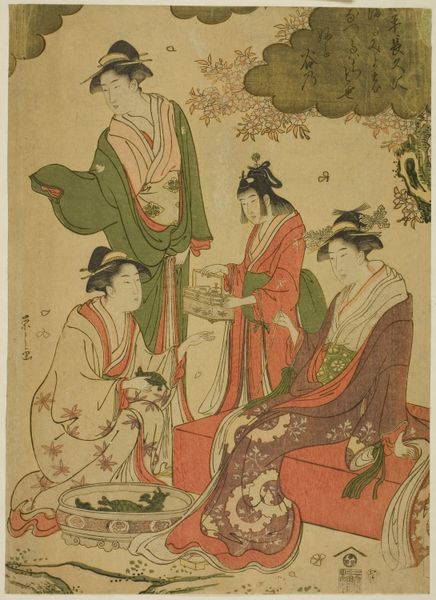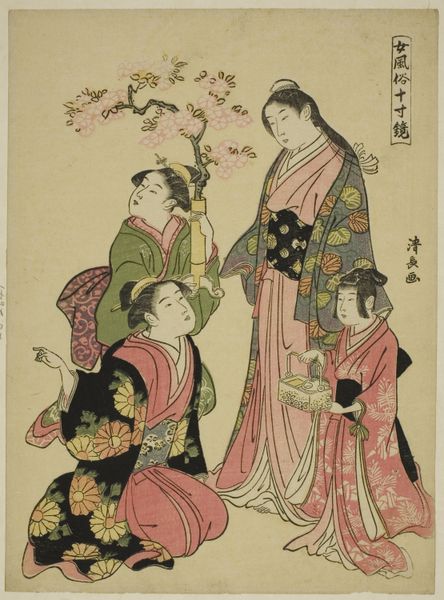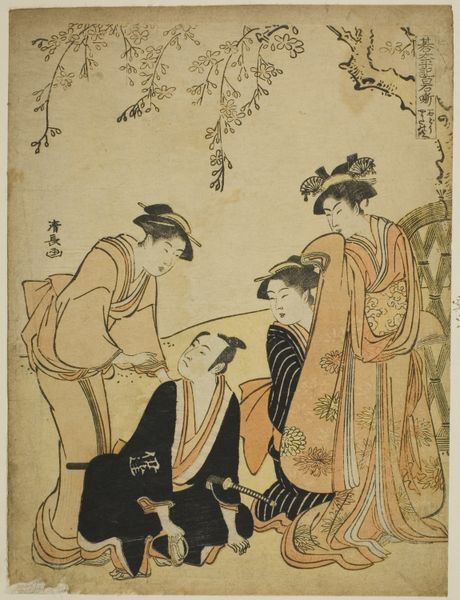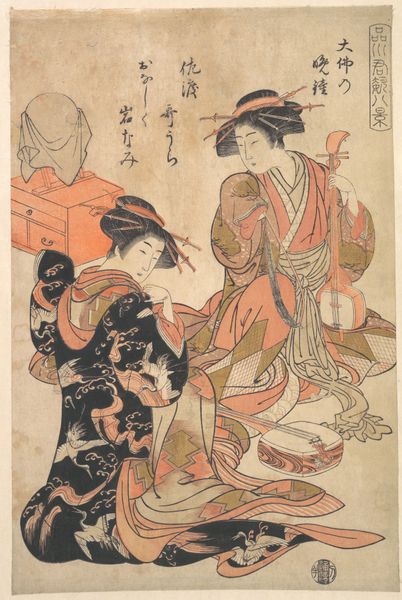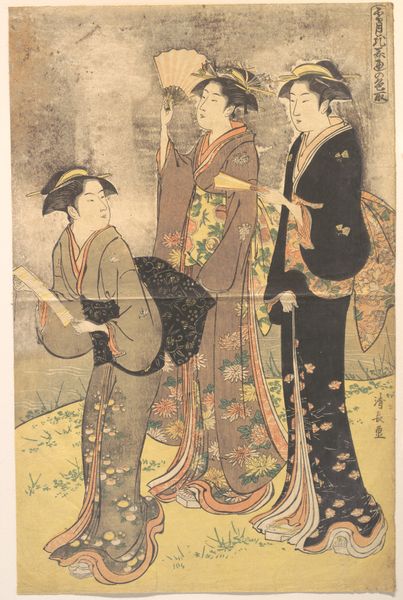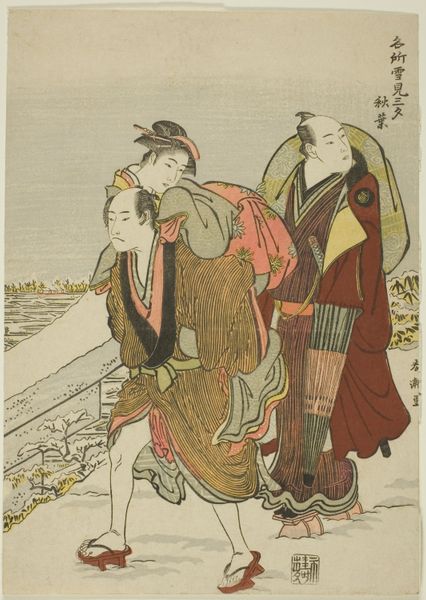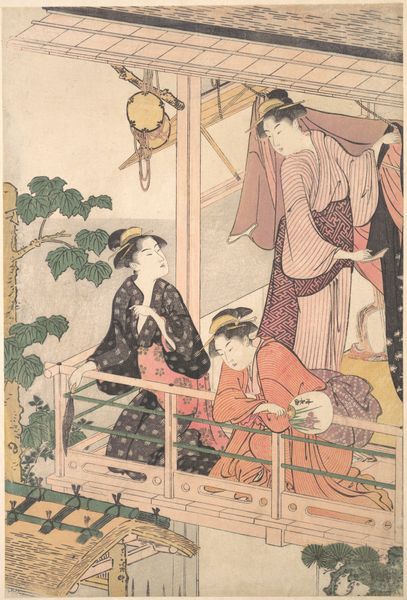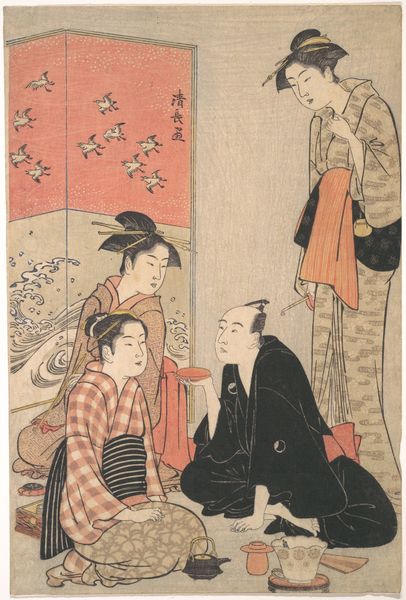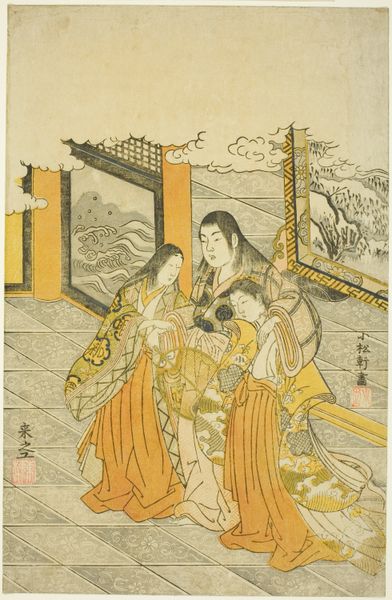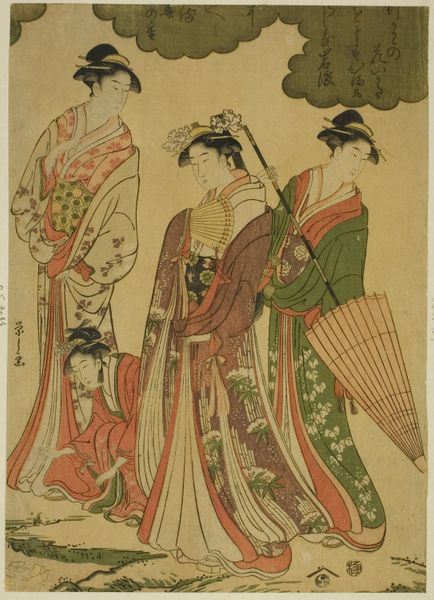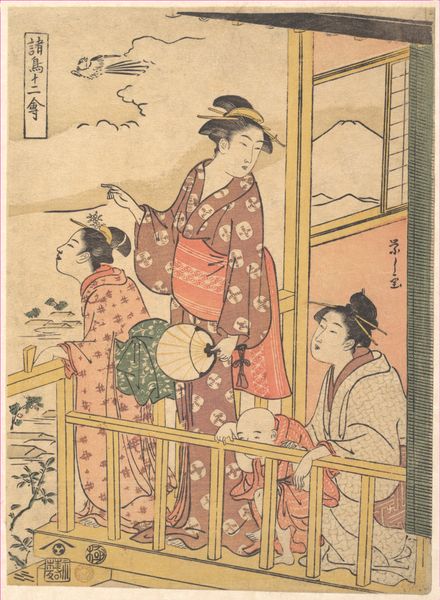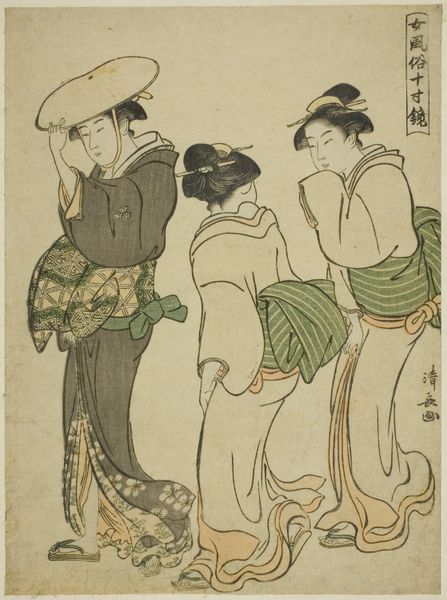
print, woodblock-print
#
ink painting
# print
#
asian-art
#
landscape
#
ukiyo-e
#
figuration
#
woodblock-print
#
genre-painting
Dimensions: H. 14 5/8 in. (37.1 cm); W. 9 13/16 in. (24.9 cm)
Copyright: Public Domain
Editor: Here we have "Ladies at a Picnic", a woodblock print by Chōbunsai Eishi, created sometime between 1780 and 1800. I am struck by the quiet intimacy of this scene, this sort of private world these women occupy. What deeper stories do you see unfolding within this seemingly tranquil setting? Curator: This print, situated within the Ukiyo-e tradition, offers a window into the floating world, yes, but let's consider what 'floating' actually means in Edo-period Japan. It signifies not just beauty and pleasure but also a social context for women who often lacked agency elsewhere. How do we reconcile the aesthetics of leisure with the realities of women's lives, particularly in relation to class and societal expectations? Editor: So you are saying that it's not just a pretty picture, but that this picnic is a representation of limited freedom? Curator: Precisely! The cherry blossoms, a symbol of fleeting beauty, echo the ephemeral nature of these women’s social standing and, perhaps, their power. Consider the carefully crafted expressions, the layering of kimono, the composition. Are these women truly at leisure, or are they performing leisure? And for whose gaze? Editor: It's fascinating to consider their poses as almost performative, even in an intimate setting. It’s like they are aware of the artist observing them, and therefore us, centuries later. Curator: Indeed. It urges us to think about the gaze, representation, and the subtle negotiations of power at play. These women’s identities were largely tied to social role; we should analyze how their freedom may have been both expressed and limited by these contexts. How does contemplating this art challenge our assumptions about pleasure and societal norms, then and now? Editor: This really shifts how I understand Ukiyo-e prints. It’s not just documenting beauty, but documenting the complex social positions of women within this world. Curator: Exactly! By bringing historical context and contemporary theory, such as feminist thought, we can unlock layers of meaning that a purely aesthetic appreciation might miss.
Comments
No comments
Be the first to comment and join the conversation on the ultimate creative platform.
